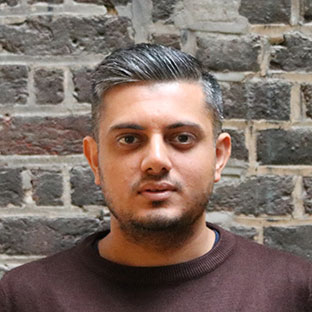Given the scale of the challenges we face, only by collaborating effectively can public services support and strengthen communities. But how do we bring people together?
There is a growing recognition across society that collaboration is vital to meeting the increasingly complex challenges we face. When our welfare state was originally created, its architects did not anticipate that decades later social, economic and technological transformations would give rise to the ‘wicked’ problems of today: entrenched inequality, chronic ill-health and the impacts of an ageing society. The ability of a ‘transactional’ state to respond with managerial solutions, particularly in an austerity and rising demand context, is now seriously curtailed: there is broad agreement that only through fostering deep connections with communities and genuine collaboration with sectors and institutions across society can the state and public services meet the social needs of today.
As a result collaboration is now a buzzword in social policy, and emerging practice is illustrating its benefits. The rise of policy innovation labs – such as MindLab in Denmark and NESTA’s Innovation and Growth Lab – shows how creating collaborative learning spaces can unlock innovative solutions through knowledge sharing, testing and creative design. Collective impact approaches are also demonstrating that complex social challenges can be addressed through different organisations and actors working together in a systematic way.
But there is an enduring challenge in creating the right conditions for genuine collaboration. Often what is passed off as collaboration is simply formal structures that enable individuals or organisations to work together, usually for instrumentalist purposes (many local strategic partnerships (LSPs) were a classic example of this). Collaborative initiatives tend to be rigid, overly structured and often constrained by institutional and cultural barriers. It is no wonder that citizens feel they have little influence over services: most ways of engaging them are superficial (such as traditional consultations) or disempowering (such as formal meetings). They tend to serve a transactional purpose and fail to build the deep connections and relationships that underpin equal partnership.
Our Platforms for Collaboration event last week, developed as part of our ‘People Shaped Localism’ programme supported by Wiltshire Council, was therefore timely, providing us with practical, hands-on learning about creative approaches that offer the potential to unlock collaboration in public services and the opportunities and barriers that exist. We learned from arts based techniques used by the Big Democracy Project, that enable people to re-engage with the democratic process; NHS Citizen, a national programme to get people involved in influencing healthcare and NHS decision-making; and Creative Gatherings, a radical alternative to traditional meetings which use creative curation techniques to bring together groups of people to develop flat hierarchies and cultures of exchange.
The discussions that took place raised a number of issues of direct relevance to the future of collaboration in public services. There were three key points I took away from the workshop about what genuine and effective collaboration might look like:
- Genuine collaboration requires a flat landscape that removes power dynamics. There was a general consensus that hierarchies can constrain effective collaboration. Initiatives that are top-down, carefully controlled and managed, and overly technical (including in the language they employ) can deter involvement from citizens and key groups of people – and this is what often happens with initiatives managed by town halls. Collaborative platforms that are explicitly designed to be open and inclusive—which do not use disempowering language or methods and involve carefully selecting a diverse range of participants spanning different sectors and demographics—can foster cultures of engagement. The workshop participants shared some of the practical creative approaches that might facilitate this: for example hosting collaborative sessions in community settings; offering food and drink as enablers of conversation and engagement; and boosting communities’ social capital and thus their willingness to connect and participate. A key part of a ‘flat landscape’ is seeing people as citizens with a range of assets and strengths (including unique expertise and insights), rather than as passive consumers of services that only have ‘needs’ (or deficits). Some collaborative initiatives centre around this notion of a capable citizen: drawing on them as conduits between institutions and communities and building the capacity of communities to participate effectively.
- Encouraging people to think outside of their institutional boxes is vital. It is almost a tired cliché to say that public services are too fragmented and siloed. But these divisions are one of the key blockers of effective collaboration. Approaches such as Creative Gatherings—which explicitly focus on unlocking collective experiences and exchange rather than institutional perspectives—can help address this. The Innovation Forum in Peterborough, which was set up by the RSA and the Map Consortium, is an example of a platform that draws on the principles of creative practice to foster a collaborative culture in the city’s public services at a time of increased austerity. One of its key achievements has been to create a sense of shared purpose amongst the city’s civic leaders with the recognition that creativity is a core driver for new ways of working.
- Genuine collaboration requires a focus on building and sustaining relationships, not simply executing tasks or hitting targets. A repeated theme during the discussions was the importance of trust and how it provides the foundations for collaboration, particularly with communities that are often characterised as ‘hard to reach,’ but also between sectors and groups of professionals that experience competing pressures. It is therefore important that collaborative initiatives focus sufficient energy on building ties between those that are collaborating - creating communities of practice rather than committees. Often the leadership and buy-in from those in senior positions is vital to creating this dynamic.
As our workshop demonstrated, collaboration done creatively can not only empower individuals and communities (supporting the development of collaborative communities), but it can also release the collective energy required to meet society’s most pressing challenges. Our research going forward will seek to explore in greater detail some of the practical issues, such as scale, applicability and sustainability, which influence the shape and form that collaboration takes, with the aim of developing a resource for practitioners interested in creative collaborative methodologies. My colleague Jocelyn Cunningham, who leads work on Creative Gatherings and creative approaches to collaboration, will also be posting a blog shortly looking at our work on collaboration. A film of the event will also be posted on our People Shaped Localism page in the next few weeks - do look out for it.
People Shaped Localism project
Related articles
-
Blog: Creativity at the point of exchange
Jocelyn Cunningham
What are platforms for collaboration and why are they important? RSA Associate Jocelyn Cunningham considers why creativity and collaboration are necessary bedfellows.
-
Blog: Shifting the Narrative of Local
Jocelyn Cunningham
Last month the RSA, as part of the People Shaped Localism programme, hosted a roundtable entitled The Felt Local: arts based approaches to belonging and identity. RSA Associate Jocelyn Cunningham reflects on the insights from the roundtable regarding perceptions of what local means and who this includes.
-
Blog: Volunteering, bricks and laser guns
Thomas Hauschildt
Volunteering is about much more than providing your labour for free. Volunteering is about empowerment, connection, trust, learning and sharing – giving and taking alike.




Join the discussion
Comments
Please login to post a comment or reply
Don't have an account? Click here to register.
Hello Atif,
I am from the Philippines and I guess, you already know the bad reputations whenever you see or hear the name of my country. The first 3 paragraph exactly described the governance we have.
Thanks for sharing this post. It is so inspiring. Kindly keep us posted. Your research will be our guide.
Thank you once again.
Sincerely,
Nelson
Hi Atif - it would be good to connect with you and Jocelyn re synergy between your work and the RSA Catalyst project Town Digital Hub (http://www.towndigitalhub.net). There seems to be a lot of common ground! Best, Keith
Thanks Keith, that's a very interesting project. My colleague Joanna Massie has mentioned it previously. Feel free to drop me a line!
An excellent piece, thanks. Do keep me informed and let me know if/how I can help.
Very Best,
David
Hi David,
Thanks for the comment. Will be sure to keep you in the loop. Please pop me an email at atif.shafique[at]rsa.org.uk.
Regards,
Atif